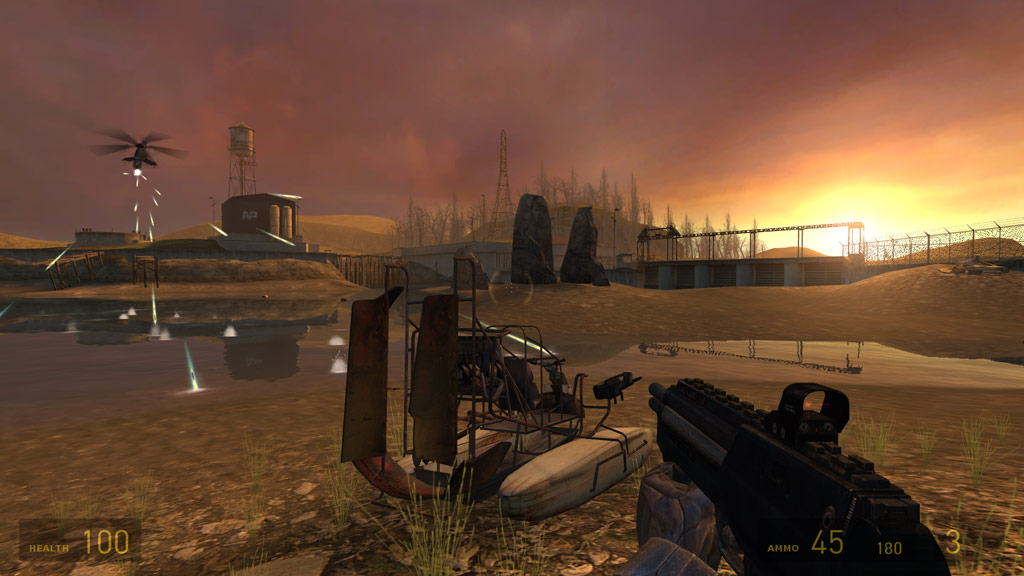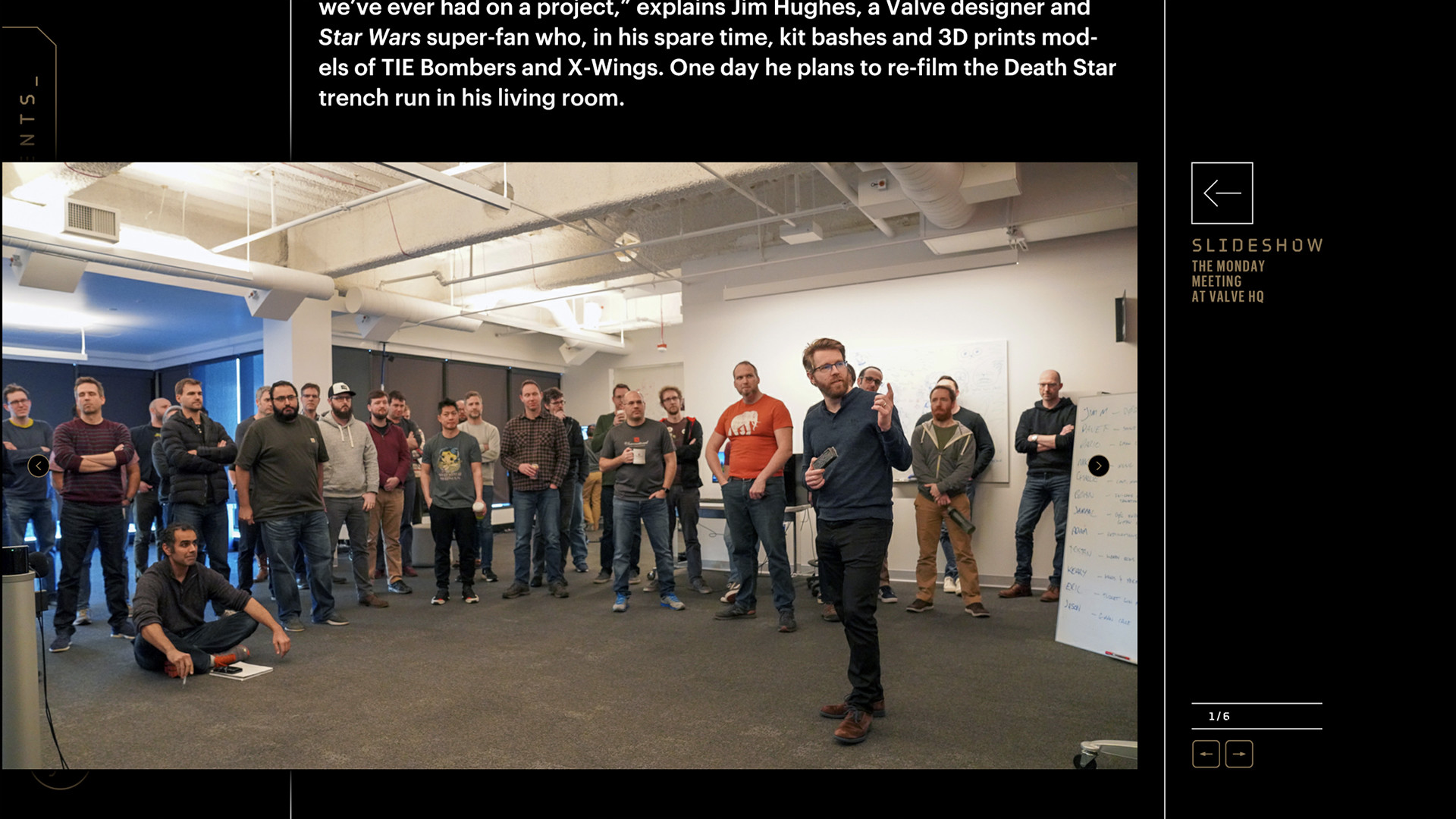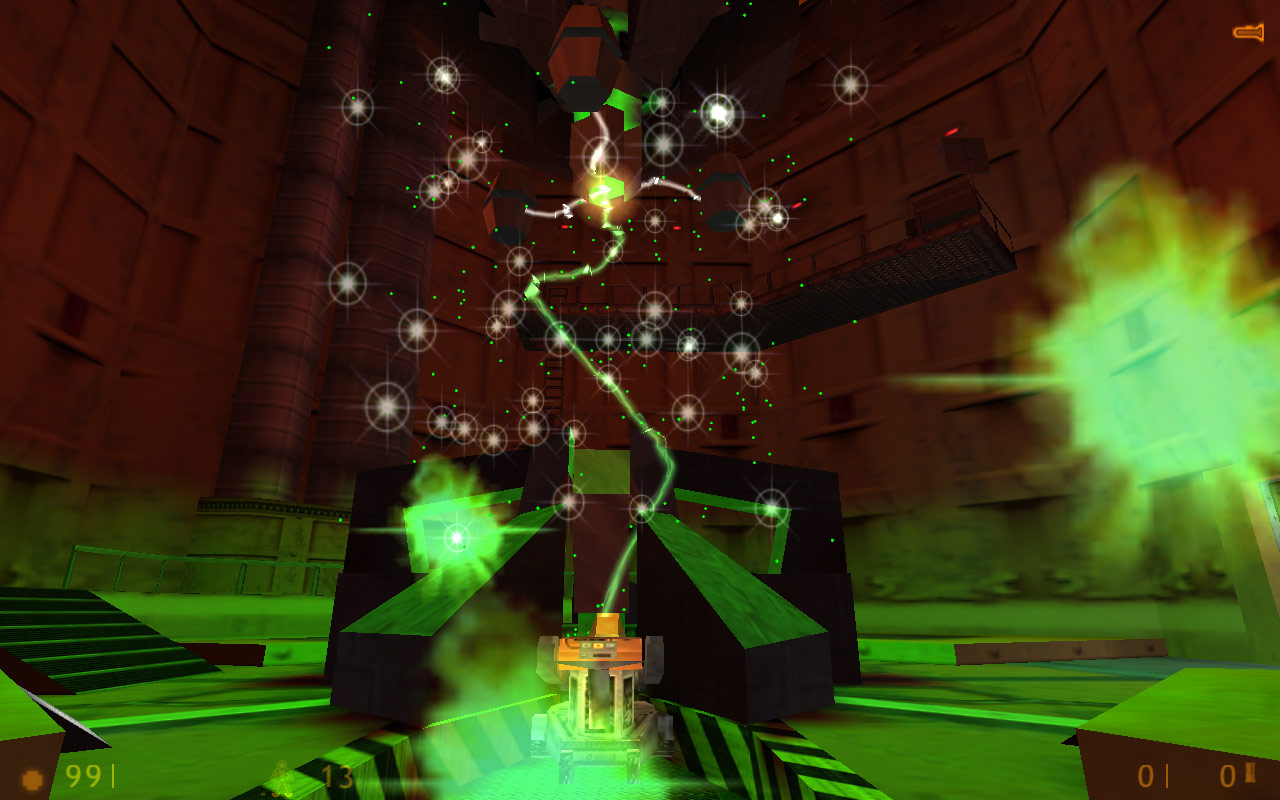There’s no studio quite like Valve. As the owner of Steam, the de facto gaming platform on PC, the company has the resources to approach game development like a state-funded laboratory rather than a studio having to worry about monthly payrolls or quarterly earnings reports.
On the one hand, this encourages unfettered freedom. On the other, it means that there’s an expectation for Valve games to be not just games, but watershed moments in the history of the medium.
No series represents this philosophy quite like Half-life - a series that we recently learned has had more games canceled than released. Half-life is Valve’s champion, its Ivan Drago representing the very apex of the smarts and technologies available to the studio - and gaming as a whole.
First there was the original Half-life, with its opening tram ride into the bowels of Black Mesa giving us an elegantly minimal yet cinematic experience like no game had given us before. This moment alone pulled first-person shooters out of the ultraviolent grime and rugged polygons of the Quakes and Unreals into a clean new era of smart narrative and crispy graphics.
Seven years later, Half-life 2 set gaming on a path that can be charted up to this very day. It’s the point at which those little details - frosted glass in an apartment complex, reflective water sloshing around the waterways surrounding City 17, weighty, believable physics - took one of the biggest leaps of all time towards videogame verisimilitude.
The Half-life series exists to disrupt the industry and propel games towards a future we could never envision until Half-life shows us. This lofty standard is why in 2020, after years of silence, Valve created a seminal VR game no one was expecting in Half-life: Alyx.
It’s also why Half-life 3 - as we imagine it, anyway - might still be a long way away.
- Best PC games: the must-play titles you don’t want to miss
- Half-Life: Alyx dev talks VR and the future of the franchise
- Best VR games: the top virtual reality games to play right now
Resonance cascade

The idea of Half-life games as ‘disruptive by design’ was echoed by Valve CEO and founder Gabe Newell in an interview with IGN. Talking about why it took so long to make another Half-life game until Alyx, his stop-start response got straight to the heart of Half-life’s meaning to Valve. Newell said: “The big gap really is-- maybe we’re stupid-- but it didn’t seem like there really was an obvious-- we don’t just crank Half-life titles out because it helps us make quarterly numbers”. Valve was searching for a spark, an opportunity to create a technical breakthrough big enough to justify the next Half-life.
But between 2004 and 2016, that breakthrough was not forthcoming. It was - and still mostly is - a time where improvements in video game tech were becoming more incremental and granular than the spectacular leaps Half-life helped drive around the turn of the millennium.
Not that Valve didn’t try. Geoff Keighley’s Final Hours documentary reveals that Valve began work on no less than five Half-life projects - Half-Life 3 among them - that were aborted for various reasons. Valve designer Dario Casali told IGN that part of that was down to Valve’s philosophy to make Half-life games disruptive in one way or another, as they were “looking for what is going to make the next big impact”.

That opportunity would eventually arrive with VR, which finally gave Valve its chance to make a mark worthy of the Half-life name while championing a legitimately groundbreaking technology.
VR was, and still is, treated with caution by most major publishers - largely due to its relatively small market not making it terribly appealing to bean-counters and shareholders. But Valve, being a privately traded company of unthinkable wealth, wasn’t restricted by those concerns. It just found a whole new dimension of gaming to play in and pioneer.
It’s hard to appreciate just what a perfect continuation Alyx is of Half-life’s legacy unless you put on a headset and experience it. It straddles technology and Valve’s trademark narrative creativity in a way that dwarfs anything the studio could have done on a flat screen. The gravity gloves you use in the game are not only a worthy successor to Half-life 2’s gravity gun, but a wonderful innovation that deals with VR’s longstanding problem with finer environmental interaction. On a technical and visual level, the Source 2 engine not only overcomes the restrictions of VR, but is one of the most impressive games in any medium.
We’re at a point in gaming tech where - outside of VR - the most talked-about advancement over the past few years has been ray tracing (the fact that we’re still talking about it is perhaps indicative of the lack of more noteworthy advancements to talk about). We see this in the latest console generation, which is marketed not so much on technological paradigm shifts, but flourishes like backwards compatibility, SSDs and high frame rates at 4K resolution. For the time being, there just isn’t enough for a hypothetical Half-life 3 to latch on to.
Flat screen plateau

A Half-life 3 would almost certainly be a flat screen game, but if these were to happen in near future then there’s no way it would be the meaningful advancement on Half-life: Alyx that Valve would want it to be. Of course it could still be an all-time great game - in fact, we’d expect it to be - but the company has just poured years worth of ideas, canned Half-life projects and tech into Alyx. Unless Valve is suddenly content to ‘crank out Half-life titles’ in direct opposition to what Newell said, then it looks extremely unlikely.
Half-life 3 has been a bit of a boogeyman within Valve. Half-life: Alyx designer Robin Walker said that “Half-life 3 was a terrifyingly daunting prospect”, with VR offering the kinds of freedom and possibilities that eased some of that pressure. Another Valve designer Phil Co said in Geoff Keighley’s Final Hours Half-life: Alyx documentary, that “we’re not afraid of Half-life no more”, which reveals what a bugbear the series had been, even if the success of Alyx has lifted some of that trepidation.
Of course, with Valve’s Source 2 engine now in a fine place, the series’ hiatus now over, and a lot of positivity coming from the studio about Half-life’s future, I can understand why Half-life 3 may seem more likely rather than less likely than ever.
But Half-life: Alyx wasn’t just a checkpoint on the way to Half-life 3, it was the big Half-life project that Valve had been trying to find a way of making for years but didn’t have the right technology to do it with. In a way, Alyx is Half-life 3 - the game-changer that’s destined to shape the future of its medium.
If Valve’s history and philosophy are anything to go by, we won’t be getting a Half-life 3 for the foreseeable future. But that’s OK, because in Alyx we already have something that is far beyond what we imagined for a third Half-life game. It’s now just a case of VR becoming an accessible enough platform for everyone to be able to see that.
source https://www.techradar.com/news/how-half-life-alyx-cannibalized-the-myth-of-half-life-3/
0 Comments:
Post a Comment